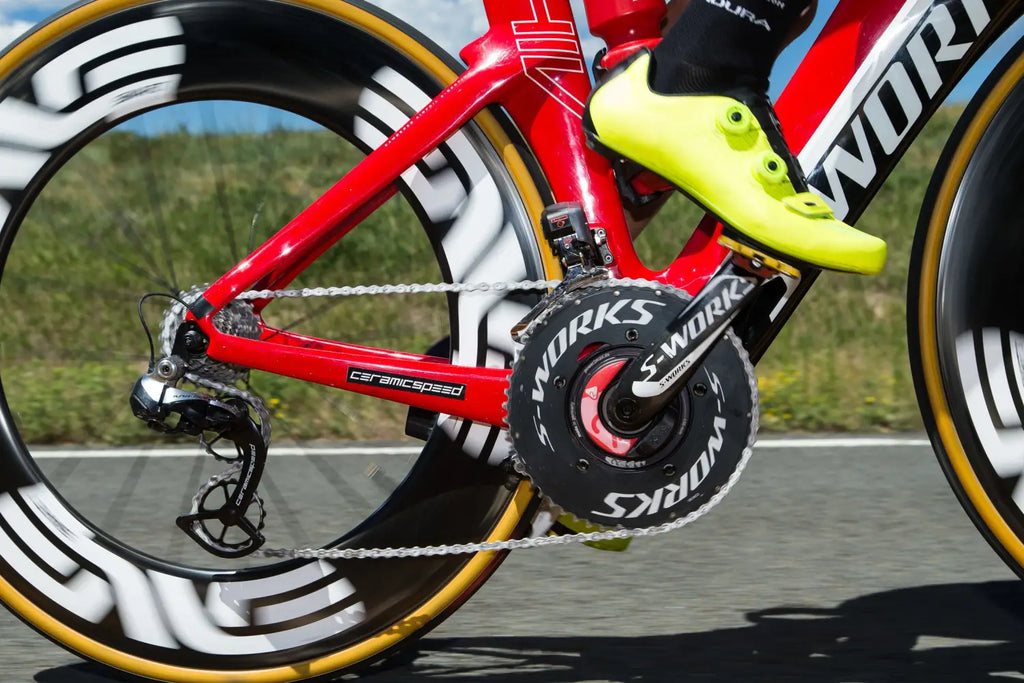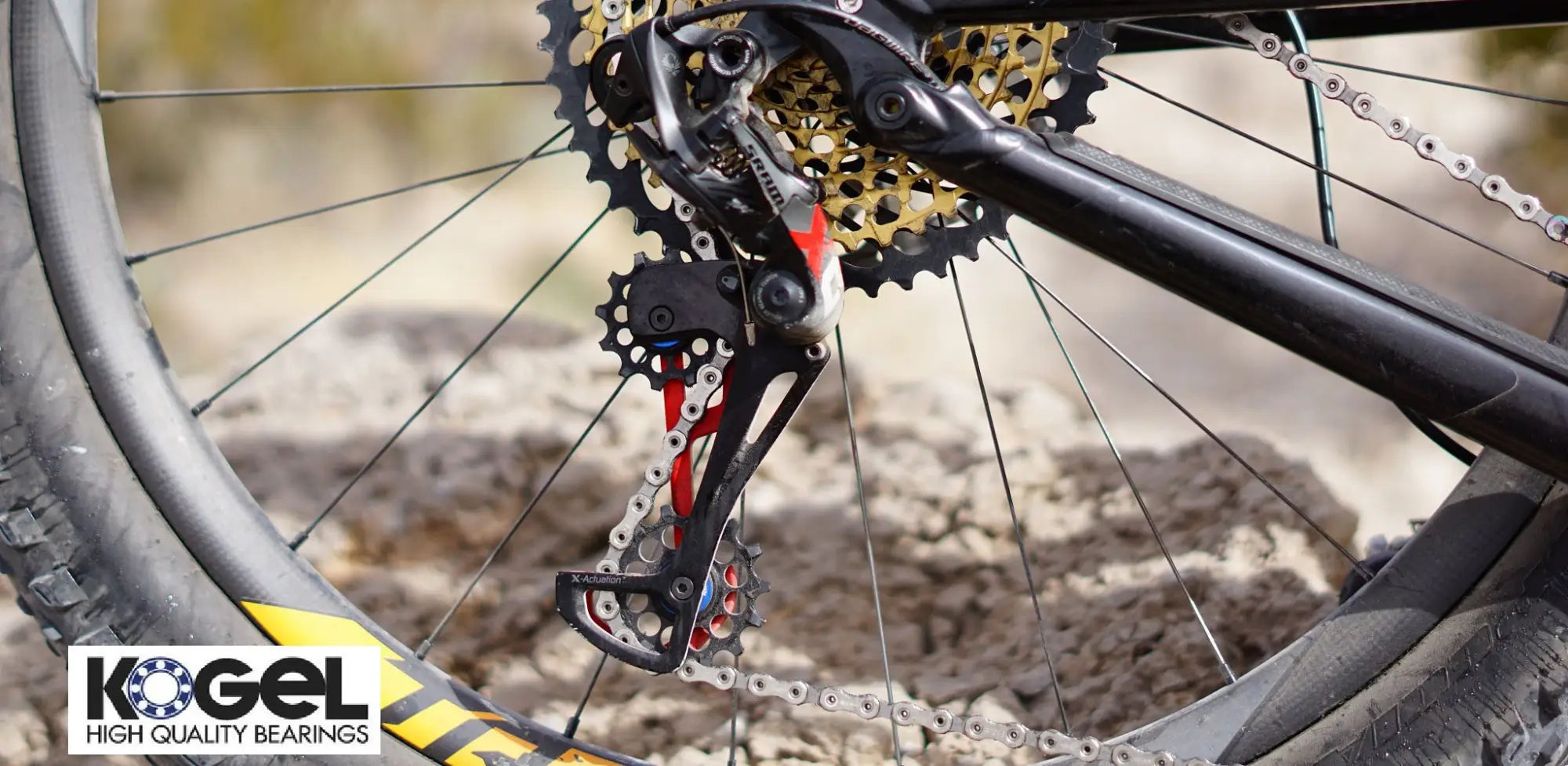Recently we have been receiving an increasing amount of questions about oversize pulley wheels. With the Ceramicspeed OSPW system and KCNC's being very visible in the market and recently Sram introducing a 14 tooth bottom pulley for their Eagle derailleurs, it sure is a trend that did not go unnoticed.
There are two main reasons for stepping away from the traditional 11 tooth derailleur pulleys: reducing drive train friction or increasing chain length. Heck, we'll throw good looks in there as well, because that's important!
Reducing friction
I have worked a bit with Jason Smith of Friction Facts in the past and he is probably the most trustworthy person in our industry when it comes to drive train friction.
Jason recently sold his business to Ceramicspeed, so I am going to assume that he did their research. I trust the claims to save at least 2.4 watts to be accurate if you replace your standard pulleys and derailleur cage with the Oversized Pulley System. Making less bends in a chain to cause less friction seems like sound logic to me.

As I'm a big fan of real world testing after doing some basic runs in the lab, we have to realize that a drive train does a lot more than just transfer power from the chain ring to the wheels. It handles shifting too and it's important to keep the derailleur on the bike when making a sharp right in a crit race, maybe a bit too close to a curb.
This is where things get interesting: oversized pulleys mean a longer distance between the center of the pulley and where the chain runs. Since at the heart of this system is a ball bearing and the ball bearing will need some kind of play to run lightly, this play will be exaggerated over the long radius of the pulley diameter. A bit of this is good, it can be used to balance out a slightly maladjusted derailleur, similar to the float found on Shimano pulleys. A lot of it will just make the shifting spongy and inaccurate. Using a ball bearing with a tighter or no tolerance will reduce this effect, but will increase friction.
Combining this exaggerated deflection with a retro fitted, extra long derailleur cage is a good way to make your shifting less snappy than it was when your parts came from Sram or Shimano.
We have seen more than a few road racers test oversized pulleys and find out it was not for them: in criteriums, road racing or even fast paced group rides, where shifting happens often and aggressive, you do not need the extra distraction of looking down at your drivetrain to see if a shift actually happened.
On the other hand, in long distance triathlon, where riders typically travel in straight lines, do not have to deal with sudden accelerations and typically shift less often, the reduced friction makes total sense. You decide where you sit on this spectrum.
Join us later this week for a view on 14 tooth pulley wheels for mountain bikes and to learn what to expect from Kogel Bearings.
** Update: Looking for an oversized pulley set that will fit on the original cage and maintains accurate shifting? Have a look at this set for Dura Ace R9100, Ultegra R8000 and 105 R7000 derailleurs.
*** Update January 2019 - Since originally posting this blog article, we have taken a close look at the limitations of existing oversized systems. So much so we've addressed the not-so-awesome features and developed the stiffest oversized cage on the market. Looking for even more performance from your existing derailleurs? Check out Kolossos, Kogel Bearings latest oversized derailleur cages!

